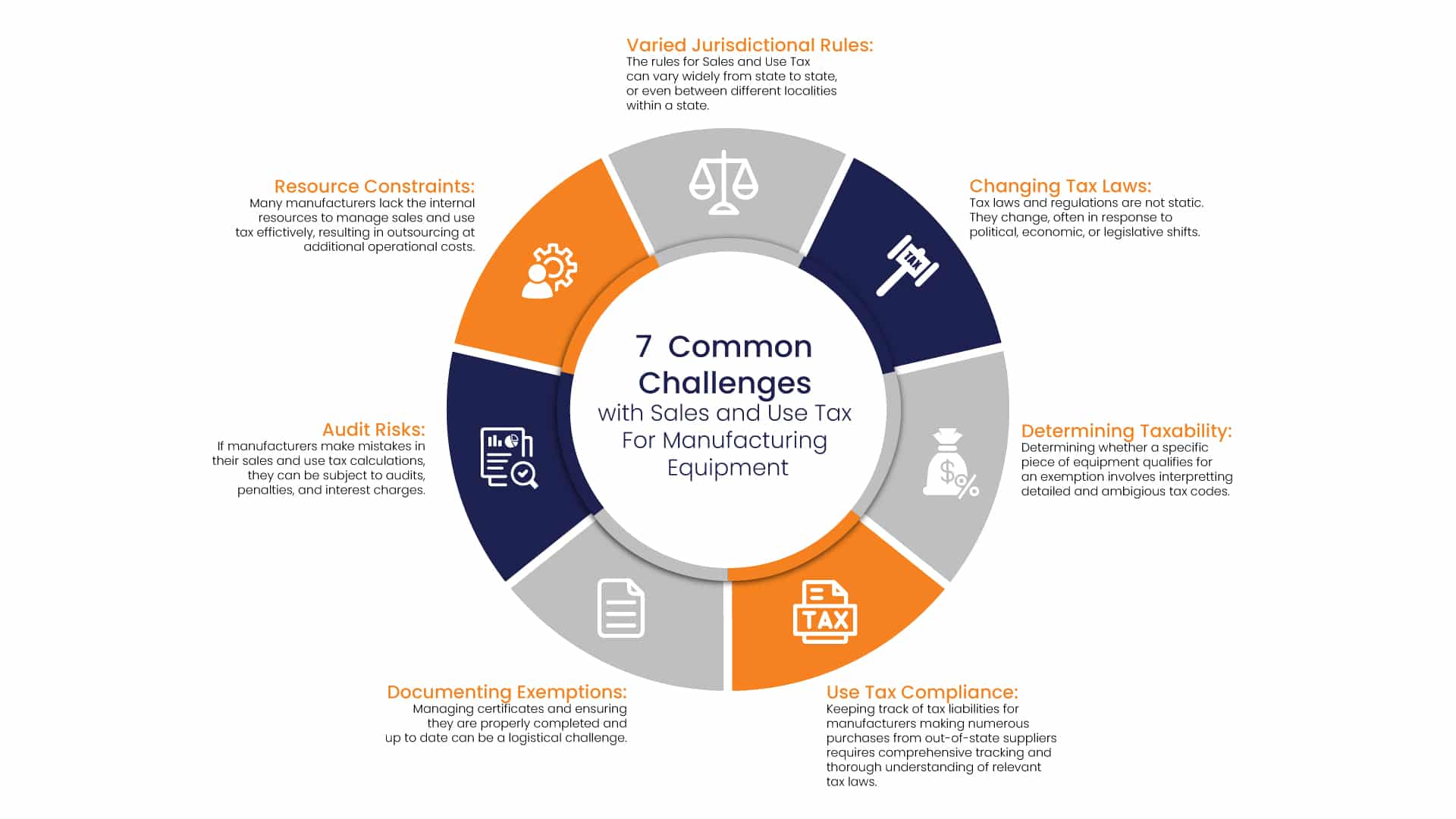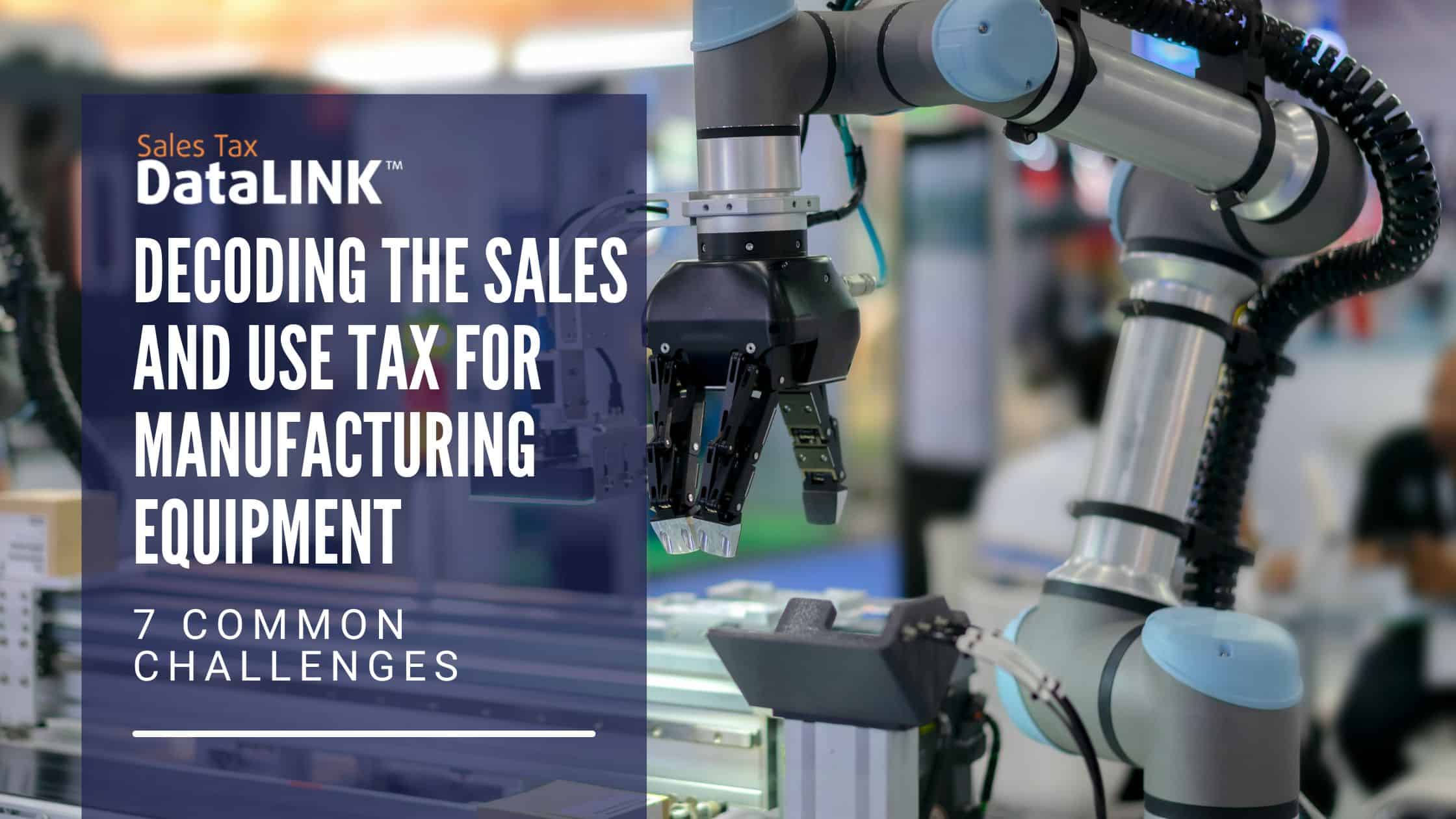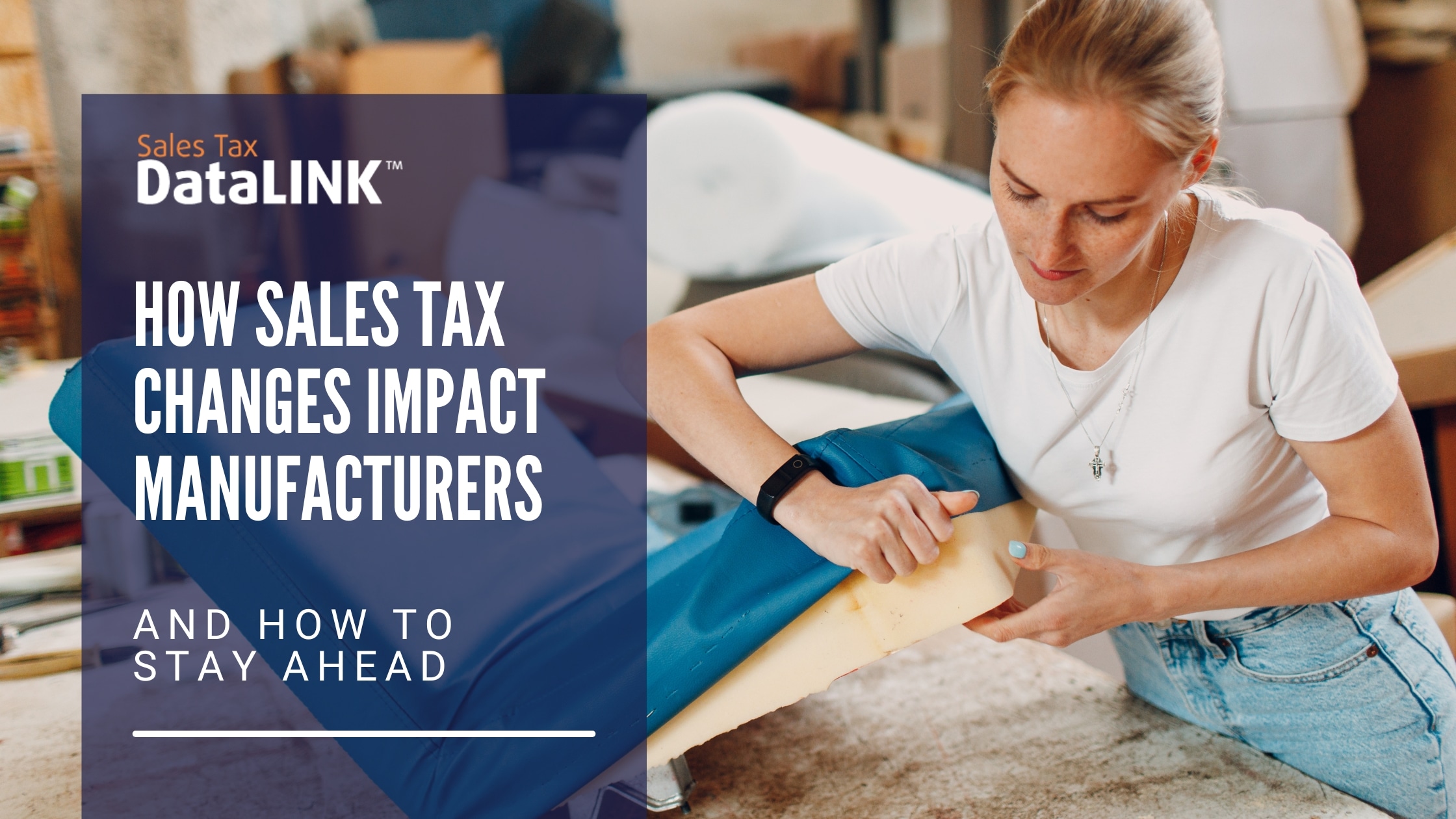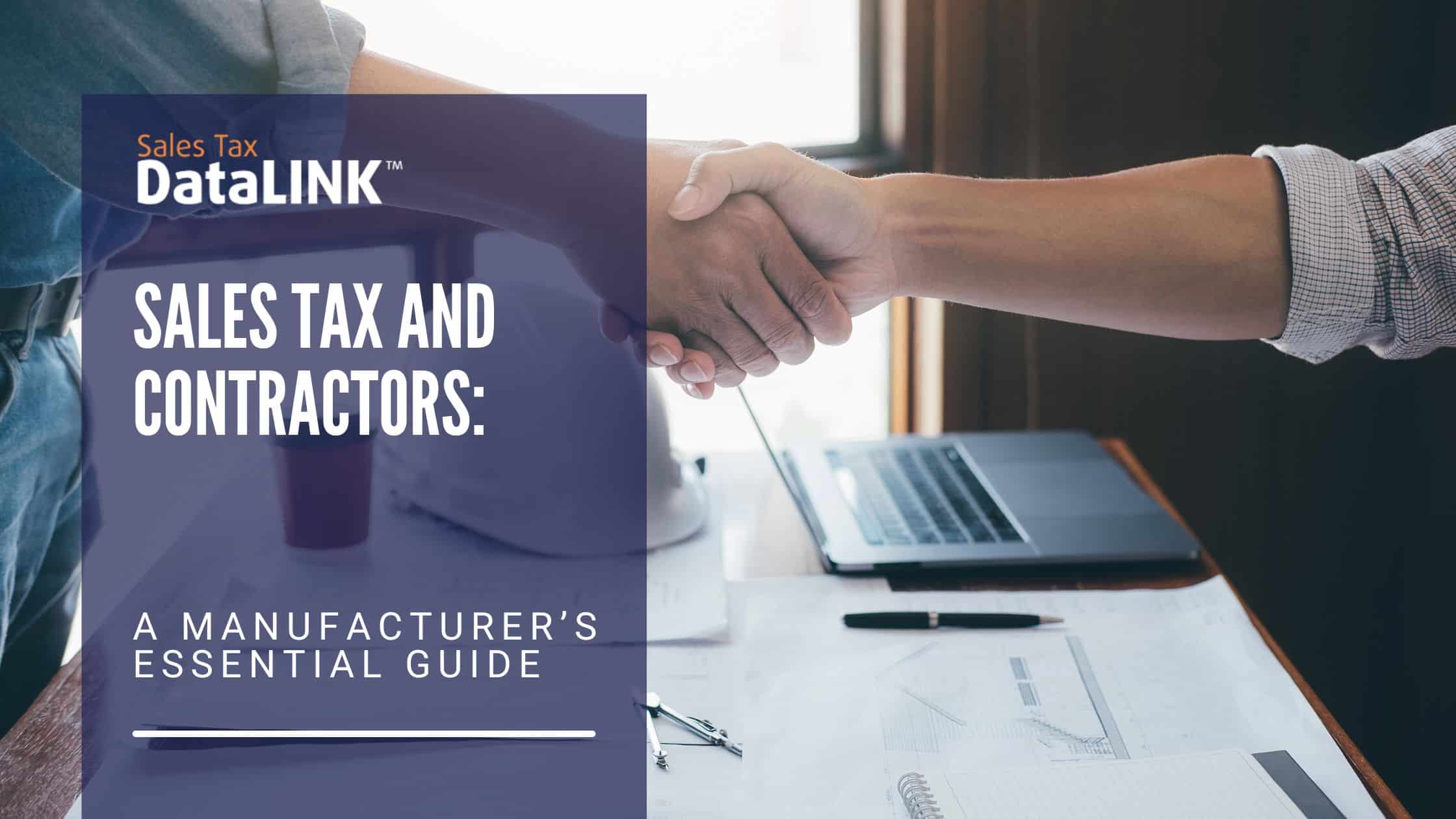Navigating the maze of tax regulations can often seem daunting, especially when it comes to sales and use tax for manufacturing equipment. Understanding these rules is crucial for manufacturers, who often make substantial investments in machinery and equipment. In this blog, we will examine the details of how sales tax applies to these purchases.
What are Sales and Use Taxes?
Before we jump into the specifics, let’s define what we mean by sales and use taxes. Sales tax is a tax imposed by state and local governments on retail transactions involving tangible personal property and certain services. Use tax, often considered a counterpart to the sales tax, is imposed on the use, storage, or consumption of tangible personal property when sales tax has not been paid.
Manufacturing Equipment and Sales Tax
Where do purchases of manufacturing equipment come into the picture? The application of sales tax to manufacturing equipment varies considerably from state to state. Some states exempt manufacturing equipment from sales tax altogether, while others apply the tax but offer rebates or exemptions under certain conditions.
For instance, in Texas, a sales tax exemption applies to machinery and equipment used directly in a manufacturing process that results in a product being produced for sale. Conversely, in California, while there’s a partial exemption, it only applies to a portion of the state’s sales tax rate, and local tax rates still apply.
Use Tax and Manufacturing Equipment
The use tax can also be quite complex. If a manufacturer purchases equipment from out of state and no sales tax is paid at the time of purchase, a use tax may be due when the equipment is brought into the home state for use. Again, the specifics depend on the laws of the particular state.
Take Ohio for example, where use tax is due on the storage, use, or other consumption of tangible personal property or services within Ohio, unless a sales tax had been paid to another jurisdiction. Thus, if a manufacturer in Ohio purchases a machine from another state where no sales tax was paid, the manufacturer would owe use tax in Ohio.

7 Common Challenges with Sales and Use Tax for Manufacturing Equipment
Navigating the long list of rules and regulations relating to sales and use tax for manufacturing equipment can be a complex process. Manufacturers often face a series of challenges, some of which are listed below:
- Varied Jurisdictional Rules: The rules for sales and use tax can vary widely from state to state, or even between different localities within a state. This can create confusion and complexity, especially for manufacturers operating in multiple jurisdictions.
- Changing Tax Laws: Tax laws and regulations are not static. They can and do change, often in response to political, economic, or legislative shifts. Keeping abreast of these changes and understanding how they affect tax liabilities is a significant challenge.
- Determining Taxability: Determining whether a specific piece of equipment qualifies for an exemption can be a complex process. This often involves interpreting detailed and sometimes ambiguous tax codes. Manufacturers may need to justify their decision to tax authorities, sometimes years after the purchase.
- Use tax Compliance: Keeping track of use tax liabilities can be difficult, especially for manufacturers making numerous purchases from out-of-state suppliers. This often requires a comprehensive tracking system and a deep understanding of the relevant tax laws.
- Documenting Exemptions: When manufacturers qualify for a sales tax exemption, they often need to provide exemption certificates to their suppliers. Managing these certificates and ensuring they are properly completed and up to date can be a logistical challenge.
- Audit Risks: If manufacturers make mistakes in their sales and use tax calculations, they can be subject to audits, penalties, and interest charges. The risk of audits can cause significant stress and require manufacturers to maintain meticulous records.
- Resource Constraints: Many manufacturers lack the internal resources and expertise to manage sales and use tax effectively. This often means outsourcing to tax consultants or investing in tax software, both of which add to operational costs.
How Sales Tax DataLINK Can Help
In the face of these challenges, Sales Tax DataLINK can provide invaluable assistance. Our platform is designed to simplify the complex process of managing sales and use taxes, helping to make compliance simpler, minimize errors, and reduce the risk of audits. With our state-of-the-art technology, we can accurately determine the taxability of your manufacturing equipment purchases across various jurisdictions, track and manage exemption certificates, and ensure accurate calculation of due taxes.
In addition, Sales Tax DataLINK keeps up with the latest changes in tax laws and regulations, taking the burden off your shoulders. We understand how taxing it can be to stay up to date on the ever-evolving landscape of sales and use tax laws. That’s why our platform is regularly updated to reflect these changes, providing you with peace of mind and certainty in your tax liabilities.
Sales Tax DataLINK is more than a tax compliance tool – it’s a strategic resource, helping manufacturers make informed decisions about significant investments in machinery and equipment. By partnering with Sales Tax DataLINK, manufacturers can focus more on their core business operations and less on the complexities of sales and use tax management. Let us help you navigate the labyrinth of tax regulations, so you can focus on what you do best – manufacturing quality products.




